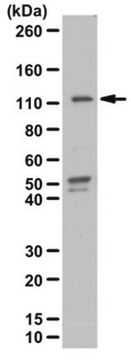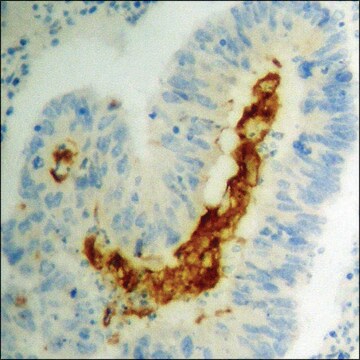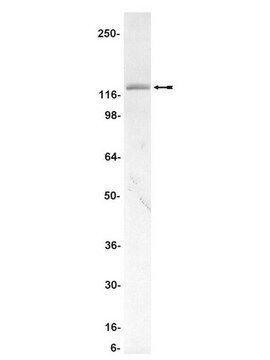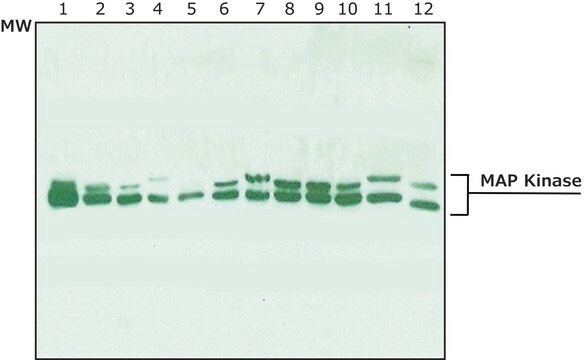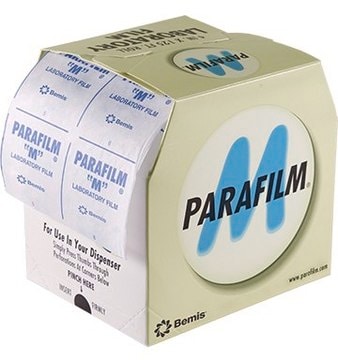07-224
Anti-phospho-STAT2 (Tyr689) Antibody
Upstate®, from rabbit
Sinônimo(s):
Anti-Anti-IMD44, Anti-Anti-ISGF-3, Anti-Anti-P113, Anti-Anti-PTORCH3, Anti-Anti-STAT113
About This Item
Produtos recomendados
fonte biológica
rabbit
Nível de qualidade
forma do anticorpo
affinity isolated antibody
tipo de produto de anticorpo
primary antibodies
clone
polyclonal
purificado por
affinity chromatography
reatividade de espécies
human, mouse
fabricante/nome comercial
Upstate®
técnica(s)
immunoprecipitation (IP): suitable
inhibition assay: suitable
western blot: suitable
Isotipo
IgG
nº de adesão NCBI
nº de adesão UniProt
Condições de expedição
wet ice
modificação pós-traducional do alvo
phosphorylation (pTyr689)
Informações sobre genes
human ... STAT2(6773)
Descrição geral
Especificidade
Imunogênio
Aplicação
- Immunoprecipitation Analysis: 10 µg from a representative lot immunoprecipitated phospho-STAT2 (Tyr689) in lysate from HeLa cells stimulated with Interferon and Interferon
- Peptide Inhibition Assay: Target band detection in lysate from HeLa cells stimulated with Interferon and Interferon was prevented by pre-blocking of a representative lot with the immunogen phosphopeptide, but not the corresponding non-phosphopeptide.
- Note: Actual optimal working dilutions must be determined by end user as specimens, and experimental conditions may vary with the end user.
Qualidade
Descrição-alvo
Nota de análise
IFN-gamma then IFN-alpha treated HeLa cell lysate
Outras notas
Informações legais
Não está encontrando o produto certo?
Experimente o nosso Ferramenta de seleção de produtos.
Código de classe de armazenamento
12 - Non Combustible Liquids
Classe de risco de água (WGK)
WGK 1
Ponto de fulgor (°F)
Not applicable
Ponto de fulgor (°C)
Not applicable
Certificados de análise (COA)
Busque Certificados de análise (COA) digitando o Número do Lote do produto. Os números de lote e remessa podem ser encontrados no rótulo de um produto após a palavra “Lot” ou “Batch”.
Já possui este produto?
Encontre a documentação dos produtos que você adquiriu recentemente na biblioteca de documentos.
Nossa equipe de cientistas tem experiência em todas as áreas de pesquisa, incluindo Life Sciences, ciência de materiais, síntese química, cromatografia, química analítica e muitas outras.
Entre em contato com a assistência técnica